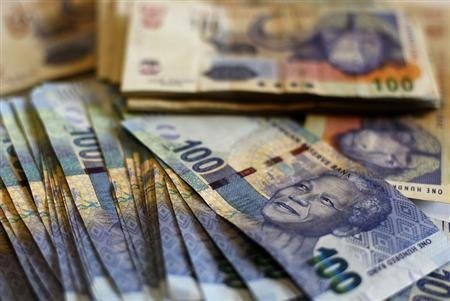South Africa's central bank kept its benchmark repurchase rate steady at 6.75 percent despite a lower outlook for economic growth and a decline in inflation as three members of its monetary policy committee voted to maintain the rate while two members voted to cut by 25 basis points.
"Any future policy adjustments will continue to be data dependent," South African Reserve Bank (SARB) Governor Lesetja Kganyago said, adding the rate path generated by the bank's latest projection model implied one rate cut of 25 basis points by the end of the first quarter of 2020, a sharp shift from March when the model implied a rate hike this year.
"Over the past few months, global growth has rebounded somewhat, but significant downside risks remain, in particular from threats to the global trade regime," Kganyago said, adding business and consumer confidence continues to weigh on economic activity as constraints on electricity and a strike in a major gold mine contributed to a weak performance in the first quarter.
South Africa's gross domestic product is now expected to shrink in the first quarter of this year and the bank's leading business cycle indicator has trended lower since March 2018, with the risks to the growth forecast seen on the downside, limited by weak confidence and growing pressure on disposable income and declining fixed investments.
SARB lowered its forecast for GDP this year to 1.0 percent from the March forecast of 1.3 percent but left its 2020 and 2021 forecasts for growth unchanged at 1.8 percent and 2.0 percent, respectively.
As before, SARB said the challenges facing the country's economy are primarily structural and can't be solved by monetary policy, making it urgent for policy makers to combine prudent macroeconomic policies with structural reform to raise potential growth and lower overall costs.
Weak demand and lower food prices has helped curb inflation, which has come down sharply in recent months, and SARB now expects inflation to peak at 5.5 percent in the first quarter of next year and settle at 4.5 percent in the last two quarters of 2021, within SARB's target of 3.0 to 6.0 percent.
In April South Africa's headline inflation rate eased to 4.4 percent, and the central bank lowered its forecast for 2019 inflation to average 4.5 percent from a previous forecast of 4.8 percent. For 2020 inflation is seen rising to 5.1 percent and then easing to 4.6 percent in 2021.
South Africa's rand has benefitted from improved sentiment towards risk assets in recent months due to easier monetary conditions in advanced economies and risen 1.5 percent against the U.S. dollar since the last policy meeting in March.
Today the rand weakened in response to SARB's decision to trade at 14.5 to the dollar, unchanged since the start of the year.






































